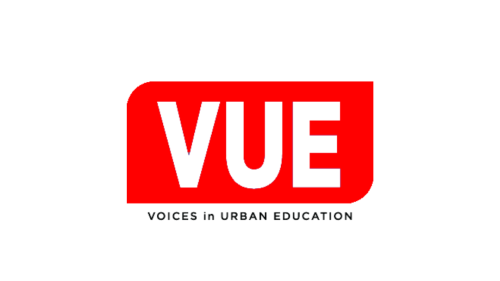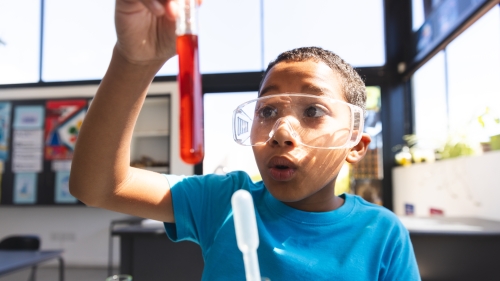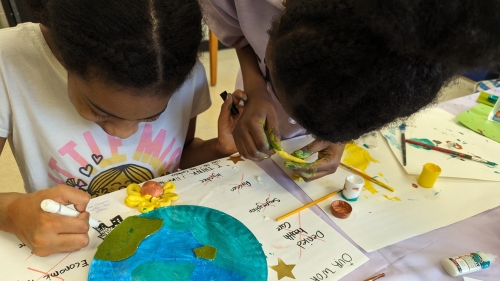Equity ensures that no matter where children live, they have access to quality learning environments. If we desire a nation where our future leaders, managers, and employees can understand and solve the complex challenges of tomorrow, we must effectively teach STEM education throughout the United States. How else can we expect today’s youth and future generations to meet the demands of an evolving career field and workforce? Enhancing the quality of student instruction in the fields of science, technology, engineering and math is critical. Equally important, a child’s zip code or racial background should not determine their STEM literacy or educational options.

NYU Metro Center brings forth a special issue of Voices in Urban Education (VUE), with the goal of bringing educators’, researchers’, and youths’ voices together in conversation about the importance of centering self-empowerment in our educational work and practices. VUE, Volume 52, Issue 2, explores how educators can support youth to see themselves as creators with technology and recognize their everyday lives and part of their presence and participation within their communities.

Collectively, the authors of each of the thirteen (13) different articles which compose this issue of VUE, grappled with the question that too frequently haunts STEM educators teaching students of color, “How can we bring love, community, and joy to the center of learning experiences to support a diversity of youth to flourish?” Sadly, computing and STEM disciplines are often taught in ways that detach knowledge from people and communities, making it difficult to explore a variety of personal, social, and societal connections that are not already at the center of the tech industry. These exclusionary practices limit the way work is accomplished—including who is involved in the design work and who technological innovations are designed for; as well as the way the work is situated within our society—including what problems technology is designed to solve and who benefits from particular innovations (Benjamin, 2019; Noble, 2018). Learning experiences and spaces for technology education should support youth as they develop new knowledge and skills in ways that recognize them as full humans, and enable them to ground it in their ideas, perspectives, interests, goals, identities, communities, relationships, and local environments.
Aligned with those guiding principles the various practitioners and researchers contributing to this exceptional edition of VUE, share approaches to and perspectives on conducting interdisciplinary STEM and arts educational experiences to cultivate cultural sustainment and flourishing of youth of color. Narratives from Yamilée Toussaint and Jennifer Loving of STEM From Dance and a discussion with Dr. Detra Price-Dennis and Dr. Yolanda Sealey-Ruiz exemplify the importance of love, joy, playfulness, and creativity to lay the foundation for learning, growth, and freedom.
This latest edition of VUE entitled, Centering Community Healing, Sustenance, and Resilience in STEM and Computing Education Through Art and Social Justice permits readers to witness how STEM From Dance has centered joy as a way to empower youth through computing educational experiences that reflect culturally situated dance practices. Professors Detra Price-Dennis, and Yolanda Sealey-Ruiz share resonant ideas as VUE’s Senior Editorial Fellow, Cami Touloukian engages them in conversation. The trio explore education as a place for cultivating love and relationships as the foundation for building the world we want to live in.

Additional selections in this VUE special issue come from NYU’s Dr. Mia Shaw and Clarisa James, Co-Founder/Executive Director of DIVAS for Social Justice. Both articles, “How Integrating Quilt-Making with Computation Supported Black Teens in Reimagining Liberatory Futures with Emerging Technologies”, and “STEAM for Social Change: The Anti-Gun Violence Asset Mapping Project”, demonstrate the superlative power of narratives and storytelling as opportunities to center learners’ knowledge, experiences, and perspectives while offering places for critiquing current systems and societal dispositions. Other contributors, such as Elizabeth Leonard of Community Word Project, Clarisa James, and educational researcher, Lora Caweti, emphasize the importance of the arts for centering learners’ voices and knowledge, creating dialogue, bridging power dynamics, and facilitating the transformation of participation. While still other contributions to this extraordinary edition of VUE come from visual artist, Dr. Nettrice Gaskins, and Dr. Kareem Edoudard who examine how we can center authentic arts practices and connections to youth learners’ identities, cultures, and communities.

Lastly, this edition of Voices in Urban Education also features artistic contributions from youth and community members. More broadly, this includes students from the DIVAS for Social Justice Program sharing a dance and music composition “Make Me Black” promoting pride in one’s culture and identity. While participants in STEM From Dance showcase a dance performance with coded animations designed in synchrony with their choreography. The work exemplifies their artistic expression on the intersection of code and dance. Additionally, VUE also received selections from Divinity Nix-Sow, who shares photos from her Black History Month natural hair shoot and the poem she wrote that inspired the shoot. The work ties together the richness possible through connecting across various forms of art and the ways it can bring us together as a society.
This latest issue of Voices in Urban Education, like each previous issue, endeavors to serve as a “roundtable-in-print” by bringing together diverse education stakeholders with a wide range of viewpoints, including leading education writers and thinkers, as well as essential but frequently underrepresented voices in educational scholarship, such as students, parents, teachers, activists, and community members. VUE, Volume 52, Issue 2, in keeping with the long tradition of NYU Metro Center’s open-source journal, successfully brings together wide-ranging scholarship and profound perspectives. Each of the ideas shared is grounded in a variety of contexts, which can facilitate our continued growth as a community, guiding how we design and carry out STEM, computing, and arts education. Every one of the many voices expressed in this issue of VUE, adds to the foundation of research offered in support of youth of color and those historically decentralized in education, conversations, and applications with technology.
Check out the latest edition of NYU Metro Center's VUE- Volume 52, Issue 2 Read: Centering Community Healing Sustenance, and Resilience in STEM and Computing Education Through Art and Social Justice
References
Benjamin, R., (2019). Race after technology: Abolitionist tools for the new Jim code. John Wiley & Sons.
Noble, S. U., (2018) Algorithms of oppression: How search engines reinforce racism. New York University Press.


